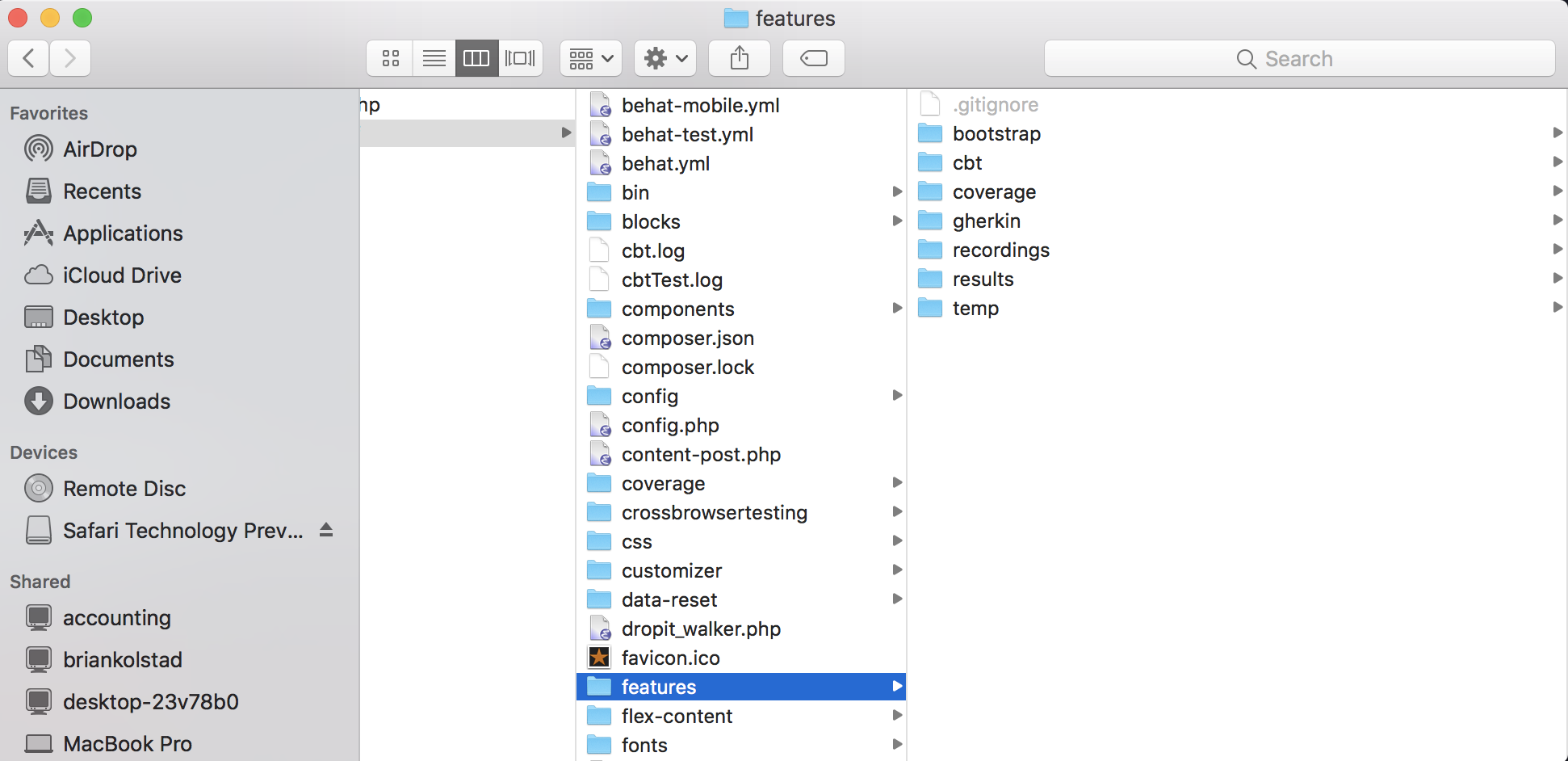How to use behat.yml
Use behat.yml to define your Suites and Contexts.
Directory & files within features
the directory structure of a QANoErr project is contained under the main root directory features. These are the directories within features:

- bootstrap: This contains the
ProjectContext.php- pages: This is where your QANoErr Chrome Extension generated POM should exist
- cbt: Files that support testing on CrossBrowserTesting
- coverage: If you have a PHP project and you run the
coveragetask - gherkin: Location of Gherkin templates consisting of:
- hbs.features: The
handlebartemplates - snippet.features: The
snippetfeatures referenced by thehbsfeatures - partial.features: The 'partial' features referenced by the
hbsfeatures
- hbs.features: The
- results: when running CrossBrowserTesting, the reports are generated here
- temp The composer command
composer behat-prepprocesses the files in thegherkindirectory and generatesfeaturesin the temp. Thebehat.ymlreferences thesuitesin the temp.
Review of the main behat.yml
Here's an example behat.yml for review:
default:
suites:
home:
paths: ["%paths.base%/features/temp/home.feature"]
contexts: [ProjectContext]
admin:
paths: ["%paths.base%/features/temp/admin.feature"]
contexts: [ProjectContext]
extensions:
Behat\MinkExtension:
browser_name: 'chrome'
javascript_session: selenium2
selenium2:
wd_host: http://0.0.0.0:4444/wd/hub
base_url: https://twlwdev.wpengine.com
SensioLabs\Behat\PageObjectExtension:
namespaces:
page: [pages]
element: [pages]
We define each of our Suites separately as shown above. This is because you can run a particular Suite by using this command line:
vendor/bin/behat --config behat.yml --suite home and that will run the home suite. If you run only vendor/bin/behat --config behat.yml then all the defined suites will run.
Each Suite has two values:
- paths: where is the feature and what is it's name
- contexts: which Context is used. Typically all our
Suitesuse the sameContext, which in this case isProjectContext.
The Behat\MinkExtension provides an API that is browser independent. In the case here, we are specifically using the browser_name chrome. Other accepted values are firefox and safari.
When running locally, we need to supply the wd_host. This is the address of the running composer selenium-server command.
The base_url is the address of the base page. As we move our code from local dev, to dev to staging to prod, we can change this base_url and run our tests w/o any other change.
The SensioLabs\Behat\PageObjectExtension extension needs to know what the namespaces are, which is always pages.
How to use behat.yml
There are a number of ways to run behat.
- composer:
composer behatwhich will runcomposer behat-prepand then runbehat - command line - all suites:
vendor/bin/behat --config behat.yml - command line - specif suite:
vendor/bin/behat --config behat.yml --suite suitename
Use w/ psysh
If you are interested in doing some debugging, you must run behat from the command line as shown above. If you use the composer approach, behat will not pause when encountering a eval(\Psy\sh()); statement. If you run from the command line, behat will pause when encountering the eval(\Psy\sh());
